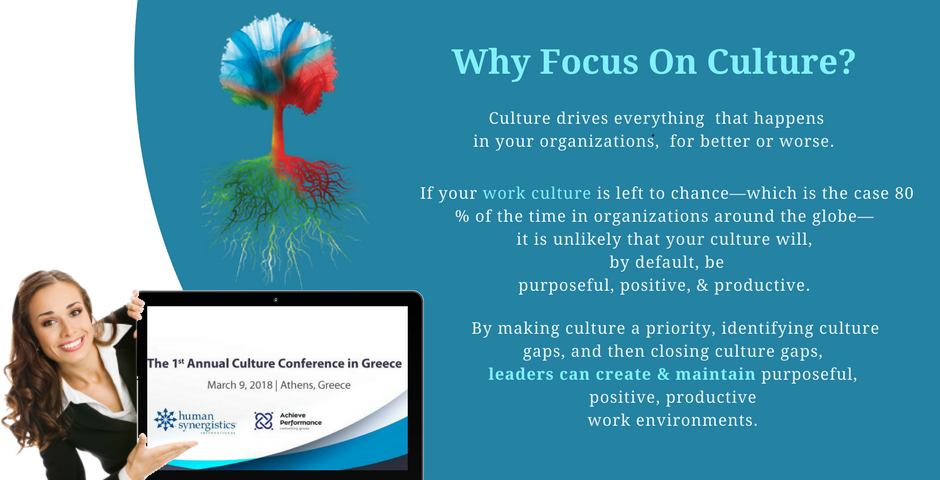Culture Change Requires Acceptance

Change Culture by Upgrading Leadership | Podcast

February 2018 – 6 Key Ingredients for Inspirational Leadership


Culture Change Requires Acceptance,
You can’t impassion others about their work unless and until you’re impassioned about yours.
When I speak with senior leaders, I ask them about their organization’s performance. They are quick to note where results are stellar and where they have a need for improvement. They are very familiar with their performance data and share it with little hesitation.
When I ask these same senior leaders about the quality of their work culture, they stumble. They hesitate. They don’t have the data regarding the effectiveness of their work culture at their fingertips.
Why are most leaders so comfortable with tracking results and, at the same time, so disconnected from understanding the health of their work culture?
It’s because leaders' efforts at managing results are measured, monitored, and rewarded every day. Leaders are rarely charged with managing the quality of their work culture, much less rewarded for it.
Why Focus On Culture?
Culture drives everything that happens in your organizations, for better or worse. If your work culture is left to chance—which is the case 80 percent of the time in organizations around the globe—it is unlikely that your culture will, by default, be purposeful, positive, and productive.When your work culture does demonstrate those three qualities, people—employees, leaders, suppliers, customers, etc.—are treated with trust, respect, and dignity in every interaction.
When people are treated kindly, as powerful partners in the business, valued for their ideas, efforts, and contributions, three outcomes consistently occur. First, employee engagement goes up—by 40 percent. Second, customer service goes up, also by 40 percent. Third, results and profits improve by 30 percent, all within 18 months of starting my proven culture process.
To boost your organization’s results, you need to invest in the quality of your work culture. You need to ensure everyone is treated with trust, respect, and dignity in every interaction.
Identify the Gap
My passion is to educate leaders about the reality of their work culture, and I do this by providing undeniable truth through interviews and assessments.By interviewing senior leaders and other key players in the organization, I learn how their climate and culture operate. I learn where people are valued and where they are not valued. I learn where values like honesty, integrity, and service are embraced and acted upon daily—and where they are not. I learn who key players trust and who they have learned not to trust.
When presented with a written summary of these interviews, senior leaders begin to understand where their culture serves the company well and where it does not.
Further undeniable truth is found in validated culture assessments like the Organizational Culture Inventory® (OCI®). This assessment gathers perceptions from leaders and team members throughout the organization on the demonstrated behaviors and norms embedded in the organization’s culture, and on the desired behaviors and norms that would serve the organization, its employees, and its customers more effectively.
The resulting data is presented on the OCI® Circumplex, which offers a quick visual snapshot of the current culture's strengths and weaknesses across 12 behaviors, or styles. The ideal culture’s mix across these 12 styles is also presented in the Circumplex.
These styles are grouped into three general clusters—Constructive styles, Aggressive/Defensive styles, and Passive/Defensive styles. As you might guess, organizations that demonstrate the Constructive styles and behaviors perform better, retain staff better, experience greater quality and teamwork, and boost employee satisfaction.
When senior leaders understand the culture gaps that exist in their organizations today, they can’t go back to that “unknowing state.” By understanding their gaps—and accepting those gaps—those leaders shift to action, inspired to increase the frequency of Constructive styles and reduce the frequency of Aggressive and Passive/Defensive styles.
Close the Gap
Leaders must not only model the desired behaviors; they must coach others’ behavior as well. They need to praise aligned behavior and redirect misaligned behavior consistently and promptly. In essence, leaders must no longer tolerate dismissing, demeaning, or discounting of others’ ideas, efforts, or contributions.By making culture a priority, identifying culture gaps, and then closing culture gaps, leaders can create and maintain purposeful, positive, productive work environments
Read more
Source: www.humansynergistics.com



